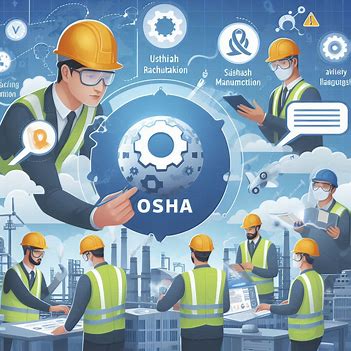Safety ROI: Why Investing in Safety Pays Off
Workplace safety isn’t just a compliance box to tick — it’s a strategic business investment. While some organizations view safety programs as a cost center, the reality is that investing in the right tools — especially EHS software — leads to significant returns, both financially and operationally.
The True Cost of Ignoring Safety:
Failing to invest in workplace safety can lead to:
- Medical expenses and compensation claims
- Downtime and lost productivity
- Regulatory penalties and lawsuits
- Damaged reputation and employee morale
According to the International Labour Organization, over 2.78 million workers die each year due to work-related illnesses and accidents. These incidents are not only tragic — they’re expensive.

What Does Safety ROI Really Mean?
Return on Investment (ROI) in safety refers to how much financial benefit a company gains compared to what it spends on safety measures.
“For every ₹1 spent on safety, how much do we save by avoiding accidents, downtime, and penalties?”
Let’s walk through a sample scenario:
➤ Total Safety Investment: ₹10 lakhs/year
This includes: EHS software license, Employee safety training, Safety audit tools, Maintenance of safety equipment.
➤ Before Safety Investment:
- 8 incidents/year
- Each incident costs the company ₹3.5 lakhs (medical, legal, downtime)
- Total Loss = ₹28 lakhs/year
➤ After EHS Software Implementation:
- Incidents reduced to 2/year
- Incident cost drops to ₹1 lakh each due to faster response
- New Total Loss = ₹2 lakhs/year
✓ Total Prevented Loss: ₹28L – ₹2L = ₹26 lakhs
✓ Net ROI = (₹26L – ₹10L) / ₹10L x 100 = 160% ROI
So for every ₹1 spent, you’re gaining ₹2.60 in value.

How EHS Software Boosts ROI:
Modern EHS software like SoftDesigners’ platform offers:
1. Real-Time Visibility: Track incidents, audits, and corrective actions across locations from one dashboard.
2. AI-Powered Risk Advisory: Predict high-risk activities and receive preventive suggestions through machine learning algorithms.
3. Permit to Work Automation: Digitize and streamline permit approval processes to reduce human error and delays.
4. AI Chatbot Assistant: Empower employees to report issues or request permits 24/7 — increasing engagement and safety awareness.
5. Compliance Made Easy: Ensure compliance with local and international regulations like OSHA, ISO 45001, and others — minimizing the risk of fines.
Data That Proves It Works:
A McKinsey study showed that companies with advanced safety systems saw a 60–70% reduction in incident rates and 20–30% fewer operational disruptions.
Our internal research also shows clients experience:
- 65 – 70% safety compliance improved
- 90% faster permit approvals
Why Soft Designers is the Right EHS Partner:
- Integrated AI-Powered Safety Tools:
SoftDesigners stands out by embedding AI Risk Advisory and an AI Safety Chatbot directly into our Permit to Work and EHS systems. This enables real-time risk detection, smarter decision-making, and faster responses—something traditional EHS tools often lack.
2. Built for Indian Industry Needs:
Our platform is developed with Indian industries in mind—manufacturing, construction, cement, aerospace and other industries.
3. Modular & Customizable Solutions:
Whether you need a standalone Permit to Work system or a full EHS suite, our solutions are modular, letting you start small and scale as you grow. You only pay for what you need.
4. Mobile and Cloud-Based:
Our EHS mobile app and cloud platform ensure your team can manage safety activities anytime, anywhere—perfect for multi-site operations and remote safety audits.
5. Proven Track Record in Safety Tech:
With over a decade of experience, SoftDesigners has helped dozens of leading companies reduce incidents, improve compliance, and digitize their safety operations—with real ROI. (For more insights)
6. Excellent Support & Onboarding
Our dedicated support and implementation team ensures your staff is trained, your data is migrated securely, and your team sees results quickly—without tech stress.
7. We’re Not Just Software Providers—We’re Safety Partners
We work closely with your safety and compliance team to provide ongoing improvements, updates, and personalized support. Your success is our success.
Want to see how much ROI your company can gain with digital safety tools?
Let’s work together to build a safer, smarter workplace.





